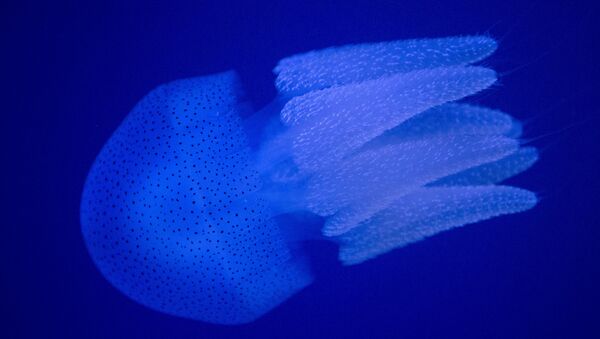The researchers at the University of Connecticut (UConn), inspired by the skins of squids and jellyfish, replicated the qualities of the sea creatures' skin in a group of stretchable, thin and rather squishy materials. When they are exposed to moisture or mechanical force, their properties can change and reveal things that weren't seen there before.
"When we stretch it, we are able to change the transparency, the surface becomes rough and will scatter light that passes through, and the UConn logo underneath the sample disappears," graduate student Songshan Zeng, who worked on the project, said in a report on the UConn website.
Stretching and releasing the material allowed open cracks to form or disappear, and thereby switching the fluorescence on or off. "The cracks are like opening and closing windows to control the penetration of UV light that is able to pass through," another researcher of the UConn lab Luyi Sun explained.
The materials can also alter their color from green, to yellow and to orange in response to mechanical force, similar to squid or jellyfish skin. When jellyfish want to scare off predators, their skin becomes opaque; and squid producing colored pigments that can serve as camouflage in the presence of danger.
The researchers are now working with partners to commercialize the suite of new materials.
"To get privacy for windows, all you would need to do is just stretch the material a little bit to obtain opacity," Zeng said, adding that it also has potential applications in display optics for toys and even in encryption technology.
The study was recently published in Nature Communications.


